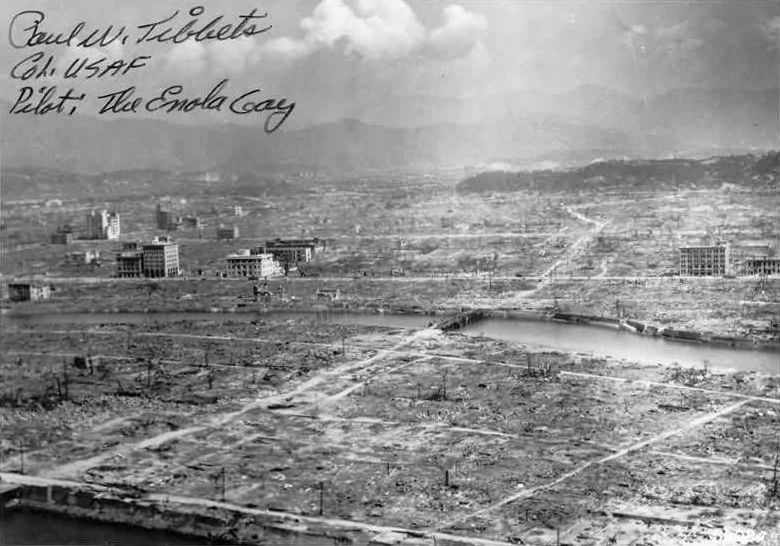Letter to the Editor: ‘Oppenheimer’ served as reminder of overlooked, disturbing reality of mutually assured destruction

Christopher Nolan’s “Oppenheimer“ was released this year to universal critical acclaim. With a rating of 93 percent fresh on Rotten Tomatoes, the film brought to life one of the most significant eras in human history.
Exploring a number of scientific, political and philosophical themes, “Oppenheimer“ served as a grim, prudent reminder of an often overlooked and disturbing reality: mutually assured destruction (MAD) is one of the greatest threats to human existence. Now more than ever, global diplomacy and disarmament warrant immediate attention.
MAD is a military theory rooted in the idea that nations armed with nuclear weapons are deterred from using them by the realization that doing so would result in the demise of all parties involved. Nine countries currently possess nuclear weapons. In ascending order of those with the least inventory to those with the most, those countries are North Korea, Israel, India, Pakistan, United Kingdom, France, China, United States and Russia. Ninety percent of the world’s nuclear weapons belong to the United States and Russia, who possess 5,244 and 5,889 respectively.
The largest cities in the U.S. (New York, Los Angeles and Chicago) are prime targets for a nuclear strike. In nuclear warfare, countervalue targeting implies an attack on a civilian population, as opposed to counterforce targeting aimed at a nation’s military infrastructure. The aim of a countervalue strike is to destroy a nation’s socioeconomic base and utterly demoralize its people. The idea of countervalue targeting goes hand in hand with the theory of MAD, acting as a deterrent to the adversarial nation drawing first blood. Being the third largest city in the United States, Chicago is a major candidate for a countervalue strike.
However, the threat of nuclear warfare has far reaching consequences that extend beyond bustling cities like Chicago. If Chicago were to be targeted, cities more than 300 miles away, like Quincy, would be affected.
Imagining a countervalue strike on a major metropolitan area like Chicago is a grim notion but a necessary one for humanity to take seriously the threat of MAD. Nuclear weapons were used in warfare only once — in Japan in 1945, effectively ending World War II. This consisted of two countervalue nuclear strikes against the cities of Hiroshima and Nagasaki.
Shortly thereafter, American scientists created the hydrogen bomb. Hydrogen bombs can be hundreds to thousands of times more powerful than atomic bombs. To fully wrap one’s mind around the effects of a hydrogen bomb, one must imagine power so immense it can best be compared to the energy output of stars.
Should Chicago be targeted by such a strike, an enormous fireball would instantly vaporize everything within several miles of the immediate blast site, known as the epicenter. The temperature at the core of the explosion would reach tens of millions of degrees, exceeding the core temperature of the sun — not just the surface temperature but its hottest part.
This is a sobering thought. The power of such a weapon is literally god-like. The intensity and speed of such an event would ensure that those affected would die before they realized what had happened. There would be no pain and no awareness of the event. From a certain perspective, those in the epicenter of the blast would be given a swift, merciful death. Paradoxically, if one were to perish at the hands of a hydrogen bomb, this is where they’d want to be.
The blast would generate a shockwave destroying structures and wreaking death and injury for dozens of miles. Radiation sickness would immediately affect those further away who weren’t instantly killed by the blast. Those left alive within this range of the blast would be subject to third-degree burns, facing a hellish inferno all around them. The true, conscious cosmic horror of the attack would reside here for those left maimed and alive. The nightmarish landscape would be truly otherworldly. If the initial blast occurred in the Chicago loop, these effects could be felt as far as Naperville.
The mushroom cloud could be seen from as far as Quincy, 300 miles southwest, causing mass panic and fear. There would also be a certain amount of radioactive fallout experienced in cities like Peoria, Springfield, Jacksonville and Quincy, depending on the size of the bomb. Evacuation and shelter procedures would ensue. The catastrophic destruction would displace legions of Chicagoans who would seek sanctuary in these neighboring cities.
Such an event would have long lasting effects on the environment, extending to air and water quality which would certainly be felt in areas hundreds of miles from Chicago. Emergency services in adjacent communities would be stretched thin, as they’d be called upon to assist with the influx of survivors. This strain would extend to the healthcare system in general.
The current geopolitical climate is more precarious than it has been in quite some time. With the 2022 invasion of Ukraine, a major world power has once again stepped into the spotlight of the world stage by initiating war. Russia’s estimated stockpile of 5,889 nuclear weapons is unnerving. This amount of weapons is far and away enough to completely obliterate Ukraine from the map. The detonation of even a fraction of these weapons would be more than enough to cause unimaginable destruction.
Fortunately, the idea of MAD acts as a deterrent to the use of nuclear weapons. Along with the logic inherent in MAD that should give any current despot pause, there exists The Treaty on the Non-Proliferation of Nuclear Weapons (NPT), a binding agreement signed by almost every nation in the world that attempts to inhibit the use of current nuclear weapons and cease the creation of new ones. It’s important to note that Israel, India and Pakistan never signed the treaty, and North Korea pulled out of it in 2003.
The probability of nuclear Armageddon is nebulous. The NPT, combined with the idea of MAD, act as deterrents in theory. However, it’s important to remember human minds, with their many failings, are the custodians of nuclear power. One need only look at history to grasp the probability of a nuclear strike is more than zero. This notion is akin to Pascal’s Wager, where even a minimal chance of catastrophic outcomes demands humanity’s attention and proactive measures to mitigate such risk.
It is estimated in 2023 that more than 12,500 nuclear weapons exist globally. These weapons possess enough power to irrevocably damage the planet beyond recognition. More to the point, it’s enough power to eliminate humanity from the face of the earth.
Geopolitical tensions are heightening. China has become increasingly critical of the aid provided to Taiwan from the U.S. and has been building and mobilizing its military with increasing intensity. The conflict in Ukraine shows no signs of slowing down. While not a member of NATO, Ukraine’s defensive efforts are continually being fueled by NATO power players.
Russia hasn’t been shy about voicing its contempt for western aid to Ukraine. Countervalue tactics are historically part of Russian military doctrine, and have been heavily used in Ukraine, garnering global condemnation. North Korea continues to brazenly develop and test its budding nuclear arsenal. It would be wholly imprudent to think that today humanity has evolved beyond the potential for MAD.
The human race shows no signs of giving up its penchant for industrial murder. The alliances that protect the globe from a catastrophic World War III offer a thin veneer of safety. It’s imperative for humanity to take a lesson from Robert Oppenheimer’s change of heart after witnessing the devastation wrought upon Hiroshima and Nagasaki. The geopolitical landscape is quickly changing, and the relative peace enjoyed between major world powers with nuclear weapons could easily end.
Nuclear disarmament is a complex, multi-faceted goal that is difficult to enforce, despite treaties like the NPT. As 2024 approaches, it behooves humanity to think of the nuclear threat as a looming cloud hanging over the world and not simply a remnant of a bygone era.
It’s important for Americans to understand a nuclear strike wouldn’t simply affect major metropolitan areas. The consequences would be felt everywhere, especially in nearby cities tasked with the care and sanctuary of their larger neighbors. The increasing tension on the geopolitical stage is palpable.
As geopolitical tensions rise, prioritizing global diplomacy and disarmament is not just necessary but vital to averting self-destruction.
Mitchell Provow
Quincy, Illinois
Miss Clipping Out Stories to Save for Later?
Click the Purchase Story button below to order a print of this story. We will print it for you on matte photo paper to keep forever.

